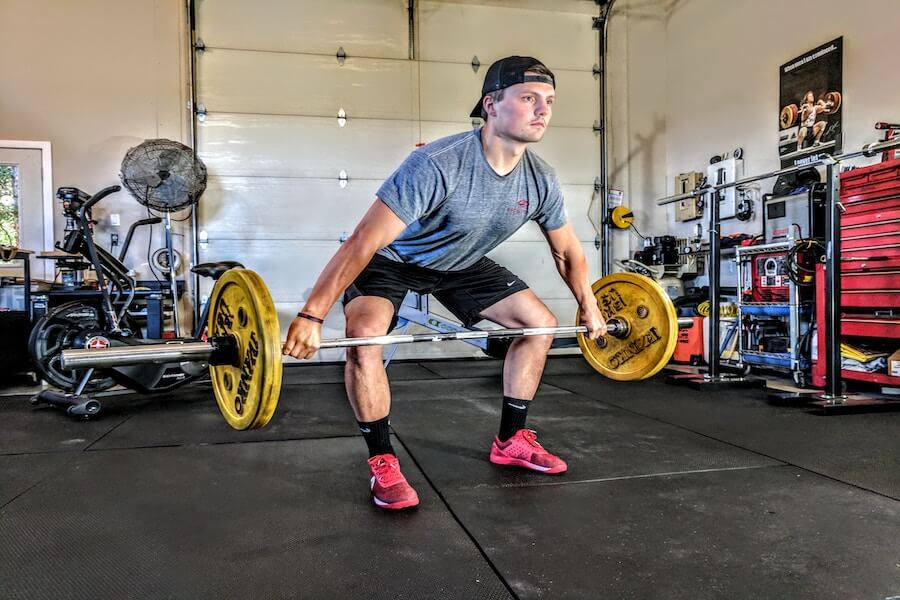If you seek a challenging and effective strength training program, 531 full body may suit your needs.
It’s an effective method for strength-building, improving, and achieving your fitness goals. The program focuses on four main exercises – squats, overhead presses, deadlifts, and bench presses.

It should be used for several weeks for a measurable gain in strength and endurance achievement. This article will cover everything you need to know about 531 full-body programs.
We will include the basics, such as structuring your workouts, supplement recommendations, nutritional requirements, and recovery tips. So, you will obtain the full benefits of this effective strength training program.
The Basics of 531 Full Body
531 full body is a strength training program developed by Jim Wendler. It focuses on increasing muscular endurance and building strength using four main exercises.
These are squats, bench presses, deadlifts, and overhead presses, forming the program’s foundation. The program will be used for several weeks consisting of four workouts.
Each workout session will focus on four main exercises, including warm-ups and several working sets. It incorporates progressive overload, meaning you gradually increase the weight you lift each week to continue challenging your muscles to see progress.
To start with the program, you should first calculate your 1-rep max for each of the four exercises. Your 1-rep max will be the maximum weight you can lift on a single exercise repetition.
It will be the basis for regulating your weights in your workouts. Calculating your 1-rep max includes testing your strength by lifting heavier weights until you reach your maximum and gradually increase it.
It can be done with several methods, such as using a weightlifting calculator, testing your strength in the gym, or working with a coach or trainer.
After determining your 1-rep max for each exercise, you can use a percentage of that weight as your basis on working sets.
How Much Weight Should I Lift Using the 531 Full Body Program?
Other weightlifting programs require you to lift the same weight for every set. The 5/3/1 method is different; you should determine your one rep max (1RM) first to calculate how much weight you can lift.
Use your training max, calculate 90 percent of your 1RM, and use that as your base on the weight you will be lifting.

Here is the example template:
| Week 1 | Week 2 | Week 3 | Week 4 |
| Set 1– 165% x 5 | 70% x 3 | 75% x 5 | 40% x 5 |
| Set 2 –275% x 5 | 80% x 3 | 85% x 3 | 50% x 5 |
| Set 3– 385% x 5 | +90% x 3 | +95% x 1 | +60% x 5 |
After you complete the first cycle workout, add 5 lb to your 1-rep max for the upper body lifts. Then add 10 lb on your 1-rep max for the lower body lifts and recalculate your working number for the next cycle.
Tips For Using 531 Full Body Program Effectively
Here are tips you should follow for using the 5/3/1 method effectively:
- Adhere to the program: Stick to the prescribed 5/3/1 training method to achieve optimal results. Deviating from the recommended sets and reps means you no longer follow the 5/3/1 program.
- Begin with lighter weights: Begin with lighter weights to allow room for progression. The program is designed to facilitate a gradual increase in strength to prevent injury.
- Incorporate supplementary exercises: Adding extra exercises, such as lunges, pull-ups, or dumbbell workouts, after your primary lift can aid in building muscle hypertrophy, minimizing the risk of injury, and developing a well-rounded physique.
For each auxiliary exercise, perform five sets of ten to fifteen reps. - Take an off: Allow your muscles adequate time to recover, and avoid training for more than two consecutive days.
Nutrition For 531 Full Body
Getting the most out of your workouts needs the proper nutrients to fuel your body. It means you should consume enough calories to support your energy needs. Supply your body with carbohydrates, protein, and healthy fats to build and repair muscle tissues.
The nutritional requirements of this program vary depending on several factors. It includes your gender, weight, activity level, and age.
However, there are some instructions to follow, such as:
- Consume adequate calories to support your energy needs and muscle growth.
- Eat sufficient protein to support your muscle growth and repair and growth.
- Eat various nutrient-dense foods, including veggies, fruits, and healthy fats.
- Drink enough water to avoid dehydration.
- Supplements for 531 Full Body
Supplements are an excellent addition to your strength training program. But they should never replace a well-balanced diet.
There are several kinds of supplements, but the most common supplements for strength training include:
- Protein powder: Protein is significant for building and repairing muscle tissue. It is a simple and convenient way to supplement your diet and meet your protein needs.
- Creatine: Creatine is a natural substance in muscle cells that help increase muscle strength and size. It’s often taken in supplement form to enhance performance.
- Beta-alanine: Beta-alanine is an amino acid helping to improve muscular endurance and delay fatigue.
- Fish oil: Fish oil supplements are inflated with omega-3 fatty acids. It helps lessen inflammation and improve cardiovascular health.
The most important supplement for this program is protein powder. It ensures you get enough protein to support your muscle growth and recovery.
If you have trouble meeting your protein needs by food alone, add protein powder supplements to your routine.
Other supplements, such as creatine, beta-alanine, and fish oil, are also helpful to enhance performance and improve overall health. But they are optional for the success of this program.
Recovery For 531 Full Body
When you do strength training, your muscles experience minor tears and damage. Recovery is needed so your body will repair this damage and build stronger muscle tissues.
Without adequate recovery, your muscles may become fatigued. It can lead to decreasing performance and an increased risk of injury.

Tips for recovery and rest days:
Here are some suggestions for effective healing and rest days:
- Get enough sleep: Sleep is significant for recovery and muscle growth. Get 7-9 hours of sleep per night.
- Stay hydrated: Drinking enough water throughout to help support recovery and prevent dehydration.
- Active recovery: Consider incorporating low-intensity exercise on rest days. You can try walking or yoga; it helps support recovery and increases your blood flow.
- Foam rolling and stretching: Foam rolling and stretching help reduce muscle soreness and increase flexibility.
- Listen to your body: Don’t push yourself too hard if you feel sore or tired. Let your body rest and recover before returning to your workouts.
How to prevent injury:
Preventing injury is significant for adequate recovery and long-term success with this program.
Here are some tips for preventing injury:
- Warm up properly before workouts: Spend 10-15 minutes performing light cardio and dynamic stretching. It improves your blood flow and prepares your muscles for exercise.
- Use proper form: Ensure you use good form and technique during your workouts to reduce the risk of injury.
- Start with lighter weights: When you start a new exercise or increase weight, start with lighter weights. It allows your body to adapt and reduce the risk of injury.
- Progress gradually: Gradually increase the intensity and volume of your workouts over time. It will tolerate your body to adapt and prevent overuse injuries.
Conclusion
The 531 full-body program is practical strength training. It focuses on the four main exercises: squat, bench press, deadlift, and overhead press.
By using a systematic approach to weightlifting and gradually increasing weight over time, the program allows you to sustainably build strength and muscle mass.
To increase the benefits of this program, you must pay attention to nutrition, supplementation, and recovery. Adequate protein intake and a balanced diet can support muscle growth and recovery, while supplements such as protein powder can be helpful.
Ultimately, the program requires commitment, consistency, and patience. But it can help to significant improvements in strength and overall fitness.
Following the program’s principles and a holistic approach to health and wellness, you can achieve your fitness goals and maintain a robust and healthy body.

When I was in high school, I was the best at running. Running for me is not a trend, this is my whole life. I jog every morning, without exceptions: I don’t skip mornings on vacations or business trips. My friends are also sports fans: I went to my best friend’s yoga class for the first time about three years ago.
Since then, I’ve been practicing regularly, and we have also made several yoga trips to India. For my last birthday, I got a skateboard as a present from her. Now we’re both taking personal classes with a coach, and it’s 100% fun!





